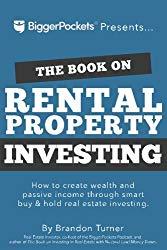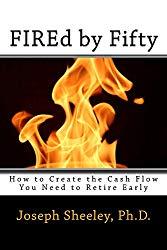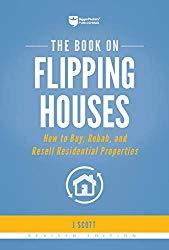The secret to reaching financial independence, whether you’re hoping to reach FIRE (Financially Independent, Retired Early) or you just want to have the peace that comes from not needing to worry about having a job to pay your bills, is to have enough free cash left over after you pay for everything to invest and build up your passive income. Passive income comes from things like dividend paying stocks, bonds, REITs
, and rental real estate
. If you don’t need the money now, you can also invest in things like growth stocks and non-income real estate (for example, land) to build up equity for a future income stream.
(Note, this site contains affiliate links. When you click on an affiliate link and buy something, The Small Investor will get a small commission for the referral. You are charged nothing extra for the purchase. This helps keep The Small Investor going and free. I don’t recommend any products I do not fully support. If you would like to help but don’t see anything you need, feel free to visit Amazon through this link and buy whatever you wish. The Small Investor will get a small commission when you do, again at no cost to you.)

The difference between your income and your expenses is called your free cash flow. The bigger your free cash flow, the more you have to invest, which, in turn, leads to increasing your free cash flow even more. For example, if you have a bank money market fund paying 2% per year and you add $1,000 to it, you’ve increased your income by $20 per year. Assuming your expenses stay the same, you’ve also increased your free cash flow by $20 per year. If you then use that extra $20 per year to add to your money market fund, you’ll be getting $20.40 in income at the end of the first year instead of the original $20. Keep doing this and you’ll double the value of the account and the income you receive from it about once every 36 years. So, if you start when you’re 20 with $1,000, you’ll have $2,000 when you’re age 56, generating $40 per year in free cash flow and $4,000 when you’re age 92, generating $80 per year. If you want to grow cash flow faster, invest in a growth mutual fund instead of putting the money in a money market fund and it will double about every 7 years, turning your $1000 into a little over $1M by the time you’re 92!
Having more free cash flow also means that you can save up for things like new used cars, kitchen upgrades, new appliances, that next air conditioning unit, or that new roof. This means that you will avoid going into debt for these expenses and making interest payments. You will therefore be able to use more of your money to buy things and invest. It is really a compounding effect: the more free cash flow you have, the easier it is to create more free cash flow.
Cutting expenses increases your free cash flow
Often people focus on decreasing their expenses to increase their free cash flow. Indeed, in FIREd by Fifty: How to Create the Cash Flow You Need to Retire Early

Check out FIREd by Fifty for ways to really grow your free cash flow
Increasing your income through work
Another way to increase your cash flow is to increase your income. Obviously this happens naturally in your career as you gain experience and become more valuable as an employee. You should always be looking ways to add to your skills and move up into the next rung on the ladder. Seek out training, take on new tasks/projects and learn from others, and generally see how you can be more valuable to your company. You may need to periodically look outside of your company to find the next opportunity if you find yourself limited where you are.
Adding side-hustles for extra income
Many people also find ways to increase their income beyond their salary, called side-hustles, to increase their income that way. These could be something like finding antiques at yard sales and selling them on Ebay
If you like doing home repair and have some time in evenings and weekends, one side-hustle to consider is buying, fixing, and flipping houses. Here you find a home that is in need of some upgrades where the owner wants to sell fast, put some time into making improvements, and then sell the home for a profit. These can generate some substantial money if you are willing to put in the time to learn the right houses to buy and the right price to pay. It is said that the profit is made in real estate when you buy, not when you sell, so buying the right places and getting a good price is the key.
Definitely take some time to read up on the process (for example, see The Book on Flipping Houses

One issue with getting into house flipping is raising the cash needed to buy properties, buy materials for the renovations, and then paying for things like property taxes and to keep the utilities on while you’re fixing, showing, and trying to sell the place. Obviously, the best option is to build up enough money to pay cash, but it might be decades before you are able to do this. Another option is to use a hard money lender who specializes in funding short-term real estate loans.
Don’t forget to protect yourself
In addition to reading and learning what you’re doing before getting involved in house flipping, be sure to protect yourself in the event that things don’t work out. You can protect yourself from liability for things like someone getting hurt at the job site and random events such as a pipe that bursts and floods the home by buying standard property insurance for your flip home. Getting an umbrella policy, which pays out after your standard insurance, would also be wise. You also need to protect yourself from mistakes, such as finding out that a renovation costs more than you expected or paying too much for a property to cover your costs and make a profit.
There are also special risks in buying single properties. For example, you could discover that the home needs a major repair like shoring up a bad foundation. Crazy events like sink holes opening up under a home also do occur from time-to-time. Protecting yourself here may include starting an LLC for your flipping business so that you can bankrupt the business without putting your personal home and property into jeopardy.
Have a burning investing question you’d like answered? Please send to [email protected] or leave in a comment.
Follow on Twitter to get news about new articles. @SmallIvy_SI
Disclaimer: This blog is not meant to give financial planning or tax advice. It gives general information on investment strategy, picking stocks, and generally managing money to build wealth. It is not a solicitation to buy or sell stocks or any security. Financial planning advice should be sought from a certified financial planner, which the author is not. Tax advice should be sought from a CPA. All investments involve risk and the reader as urged to consider risks carefully and seek the advice of experts if needed before investing.
